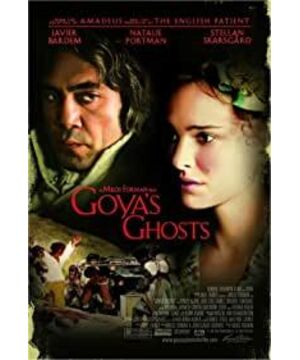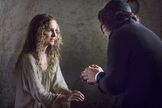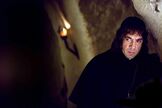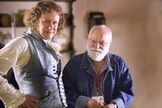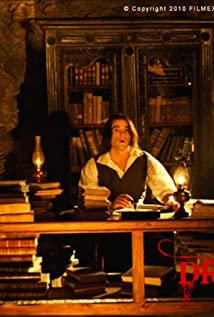When there is no systematic thinking and scientific method to deal with the material world, we rely on belief and cognition. The individual is too limited, the universe is too vast, and there is no source of suffering. Our soul seeks a kind of help, and this nature of seeking God is not found in animals. The world cannot be perceived by the five senses. We use religion to experience and comprehend it with our hearts. It is not a personal hobby, but a universal truth and a hope to purify the soul. Religion gives us a certain cognitive basis, and makes the nation unite because of cognition.
Excluding the positive effect that religion brings to us, we also see many aspects of religion in the film. It stands on the opposite side of rationality, paranoia, dogma, and barbarism. At the beginning of the film, it takes us into a gloomy environment, dark and dark. The earth, the characters twisted together in pain and convulsions, the wicked lands lingering on life. Medieval-like dark and low, accusing cruel and horrific atrocities. The printing press and printmaking technology were already available at the time, and the painter Goya used prints and printed pamphlets to reflect the cruelty and intolerance of religious persecution in Spain.
Although Goya was the royal painter of the King of Spain, he was also a democrat who sympathized with the working people, and had a good impression of Napoleon and the French Enlightenment. In the early paintings, we were fortunate to see the pastel and bright colors of the portrait of Carlos IV and the portrait of the girl Hama. The realist works in the back are deep and rich, and the darkness of the blockbusters hides the mockery of disappointment. The director imagined the story of a beautiful girl Hama being persecuted in the Inquisition from several of Goya's famous paintings. The naked and beautiful girl was subjected to pulley torture in the nude. The ten years of captivity made her unrecognizable, and her spiritual world was traumatized and collapsed. Natalie Portman's subversive image makes us gasp in surprise, and the image of the beautiful girl that haunts the painter's mind is smashed to pieces. Father Lozollon fled to France, but returned to Spain because of the opportunity of the Great Revolution, and preached the revolutionary ideas of freedom and democracy. The curtain of the times was unveiled a little quickly, and the next scene was about to be staged. Napoleon's defeat, the British representative's anti-French The Alliance entered Spain, and he was brought to the death row.
The film depicts the Inquisition as the gates of hell for sin. What is the truth about the Inquisition as a way to save souls and bring lost people back? In 1998, the Vatican opened the archives of the Inquisition. And held a press conference in Rome to make it public. One of the most shocking conclusions is that the Inquisition was not as bad as people thought. Tortures were rare, and only about 1 percent of those sent to the Spanish Inquisition were executed.
It is difficult to restore history to its true face, and it is also difficult to have a certain evaluation. How is the truth? What art needs is not truth, but a symbol of the world.
"The greatness of an era is not to see who Lorenzo has become, but to see how the beautiful Hama lives."
View more about Goya's Ghosts reviews


